| Writing with Clay and Stone | |||
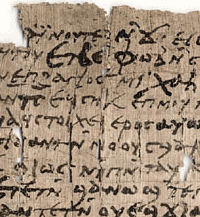 |
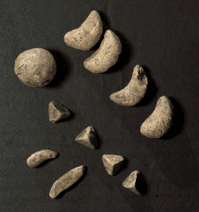 |
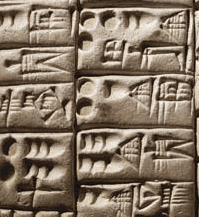 |
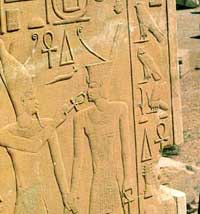 |
| Why should a graphic designer study handwriting? We study handwriting because the first mechanically produced letterforms were designed to directly imitate handwriting —importing the existing manual standards for form, rhythm and spacing into printed type. The shape and line of hand drawn letterforms are influenced by the tools and materials used to make them. Sharpened bones, charcoal sticks, plant stems, brushes, feather and steel pens all contributed unique characteristics. Additional factors included the material upon which the forms were written: clay, papyrus, animal skins (vellum and parchment) and paper. |
Clay Bullae 8000–3100 B.C.E. Mesopotamia As civilization evolved from nomadic hunters into a more agricultural society and began trading goods, it was necessary to find a way to record transactions. Small portable clay tokens were fashioned into specific shapes to represent objects in approximately sixteen economic categories—sheep, grain, oil etc. The tokens were stored in clay ball-shaped envelopes, bullae, which were impressed on the outside with the shapes of the tokens found within. Around 3100 B.C.E. the shaped tokens were replaced by drawing the shapes onto clay tablets. This however was not yet a system of writing — writing is used to represent language, not as an accounting tool. The token/image system ended with the emergence of a writing—a system for graphically recording spoken language. |
Cuneiform c. 3000 B.C.E. Cuneiform, the earliest system of actual writing, was used in a number of languages between the 34C. B.C.E. through the 1st century C.E. Its distinctive wedge form was the result of pressing the blunt end of a reed stylus into wet clay tablets. The cuneiform characters evolved from pictograms that had been rotated onto their sides, abstracted into symbols and organized into horizontal rows. (See below) 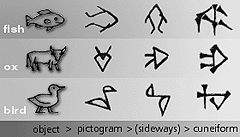 Cuneiform was written from left to right, perhaps as it helped a right-handed writer to see their work as they wrote or to keep the clay from being smeared. |
Hieroglyphics 2613–2160 B.C.E. The Egyptian writing system is fused with the art of relief carving—the Greek translation of hieroglyphics is "sacred carving." The system was a mixture of both rebus and phonetic characters—the first link to a future alphabetic system. Hieroglyphic images have the potential to be used in three different ways: 1. As ideograms, to represent the things they actually depict. 2. As determinatives to show that the signs preceding are meant as phonograms and to indicate the general idea of the word. 3. As phonograms to represent sounds that "spell out" individual words. 1 A phonemic system, one which is based upon symbols that represent spoken sound, can use alphabetic or non-alphabetic writing. Either way, the phonemic system opened the door to a functioning alphabet. Read what happened next... |
| Further Information | |||
| Recommended Reading:Cuneiform, Reading the Past, C. B. F. Walker. |
Write like a Babylonian at UPenn Museum of Archeology. | Write like an Egyptian at this link. | |
| Footnotes | 1. Middle Egyptian Middle Egyptian, by James P. Allen, p 424. |
||
| ©Designhistory.org 2011 | |||
